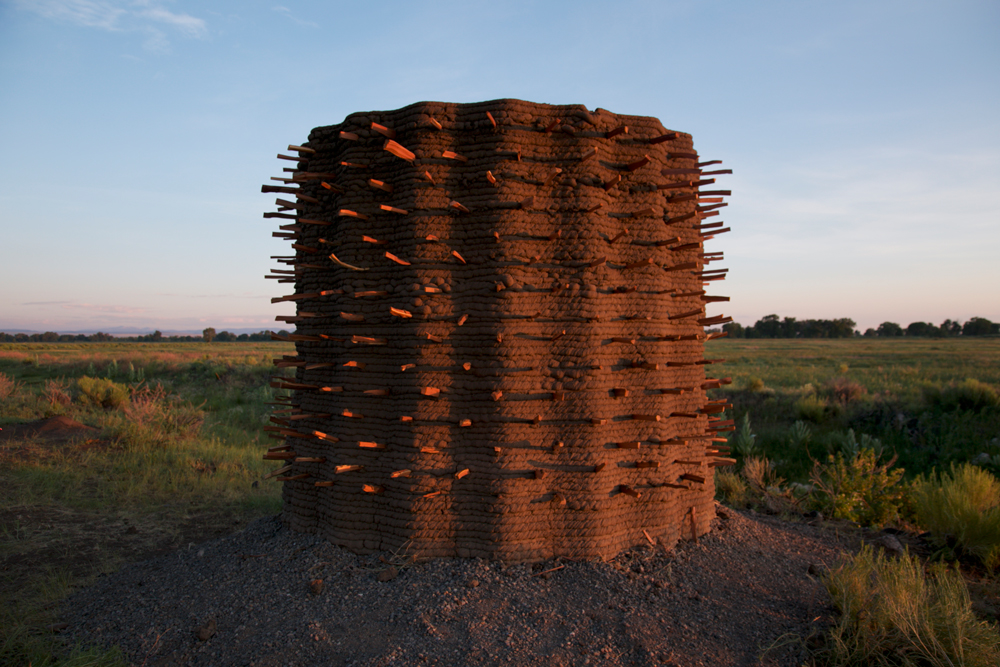
On the 40th anniversary of the Smithsonian Magazine, they announced the 40 things you need to know about the next 40 years. Number one on that list was: “Sophisticated buildings will be made of mud”. Emerging Objects explores these frontiers of technology and material using traditional materials (clay, water, and wheat straw), to push the boundaries of sustainable and ecological construction in a two phase project that explores traditional clay craft at the scale of architecture and pottery. The end goal of this endeavor is to demonstrate that low-cost and low-labor construction that is accessible, economical and safe is possible. The project began in the contemporary borderlands along the Rio Grande watershed beginning in El Paso and Juarez and ended near the headwaters of the Rio Grande in Colorado’s San Luis Valley, which was the edge of the historic border between the U.S. and Mexico prior to 1848. The entire region has employed traditional pottery and earthen construction traditions for centuries.
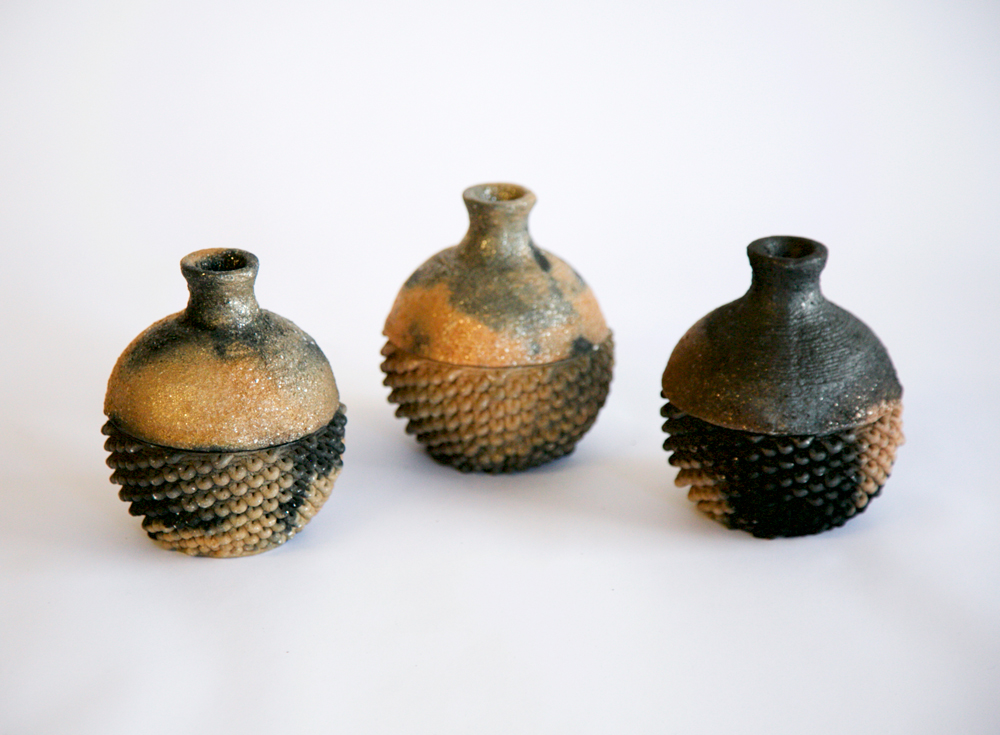
The Earthen architecture and clay pottery traditions of Ancestral Pueblo cultures (700 CE – present) and the Indo-Hispano cultures of northern New Mexico and southern Colorado (1598 – present) define the region of extending tell a story of an evolving and merging set of craft traditions using earthen materials. Here we reference both the puddled mud building traditions found in the pueblos of Northern New Mexico, most notably Taos Pueblo, constructed largely of hand-molded mud to create multi story dwelling, which later utilized the adobe brick, a technology introduced from Spain, as well as the pottery traditions of harvesting wild clay from the Sangre de Cristo and San Juan mountains in the traditions of Taos and Picuris pueblo, using micaceous clay.

To do this, we stepped out of the gallery and into the natural environment by constructing a low-cost, and portable robot, designed to be carried into a site where local soils could be harvested and used immediately to 3D print large scale structures. We conceptualized these experiments under 4 themes: Hearth, Beacon, Lookout, and Kiln.
The Hearth explores how thin mud wall construction could be reinforced using local, rot-resistant juniper wood, to hold two walls together, but also extend beyond the walls of the structure and the outside, and flush on the inside, referencing the cultural differences between the architectural traditions of pueblo and indo-hispano buildings . The interior is made of a 3D Printed tarima, or adobe bench, surrounding a fogon, or fireplace, to burn the aromatic juniper.
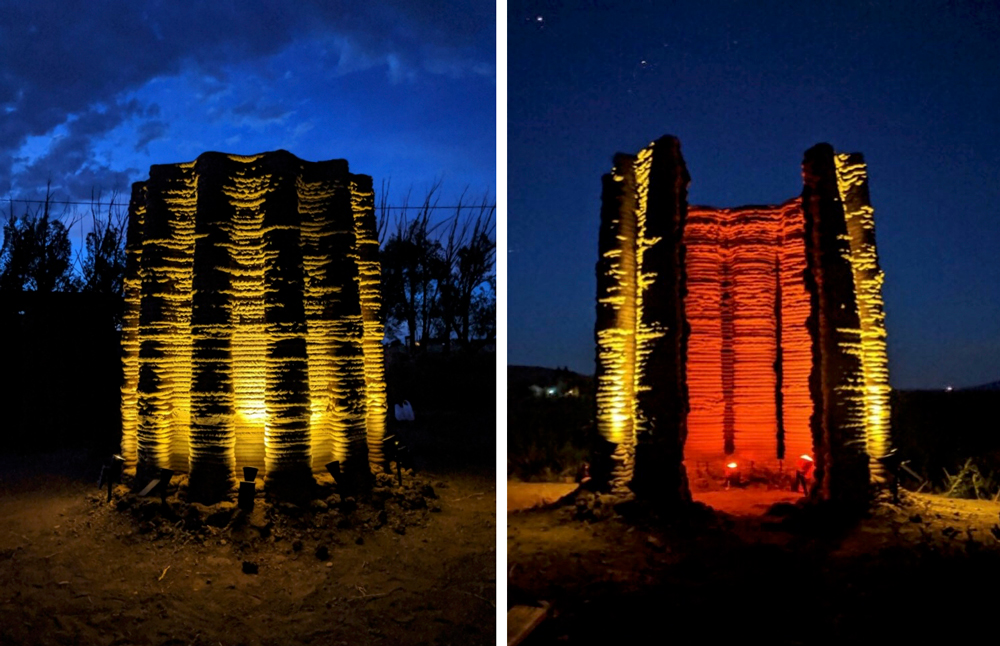
The Beacon explores how texture and the undulation of the 3D printed coil of mud can produce the thinest possible structural solution for enclosure. These coils are then illuminated at night contrasting the difference tween the concave and convex curves that create the mud walls.
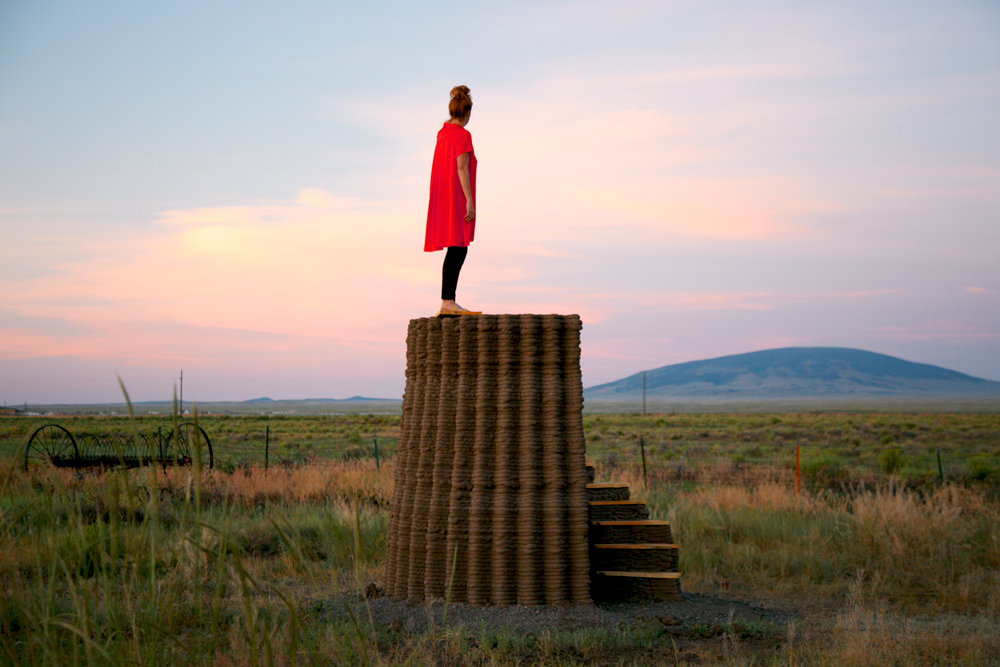
The Lookout, is an exploration in structure, and is a 3D printed staircase, made entirely of adobe. A dense network of undulating mud coils is laid out to create a structure that can be walked upon. This also demonstrates how wide, yet, airy walls, can create interior enclosures that represent possibilities for insulation, especially in the harsh climate of the San Luis Valley that can drop below -20˚ F in the winter.

The Kiln explores several of the techniques discussed, including undulating/interlocking mud deposition to create structural and insulative walls. The Kiln is also used to enclose an area that draws in oxygen and keeps in heat to fire locally sourced clay fired with juniper wood, which burns hot. The products of the kiln, fired micaceous clay learning from the traditions of Taos and Picuris Pueblos, are hybrids of technology and technique.
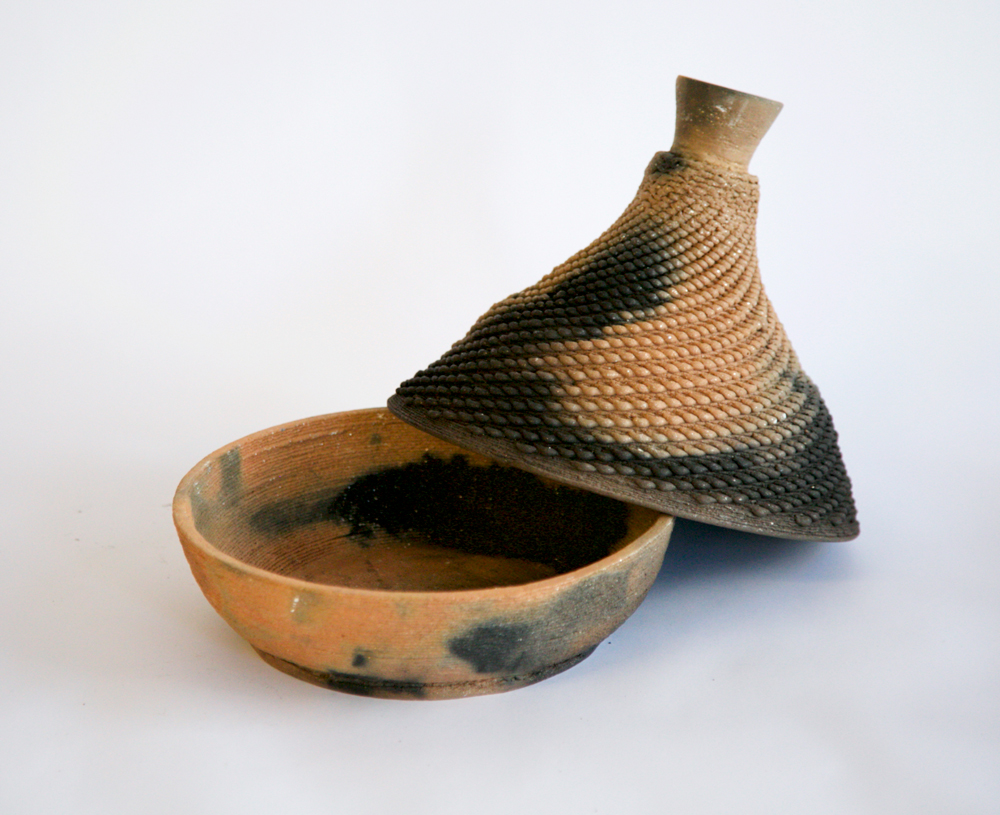
Each 3D printed ceramic vessel has reveals areas where carbon has not been burned out, leaving a deep black color, similarly to Taos Pueblo traditions, and employ a micaceous slip over the surface, that when the carbon burns out completely, is a brilliant golden surface.
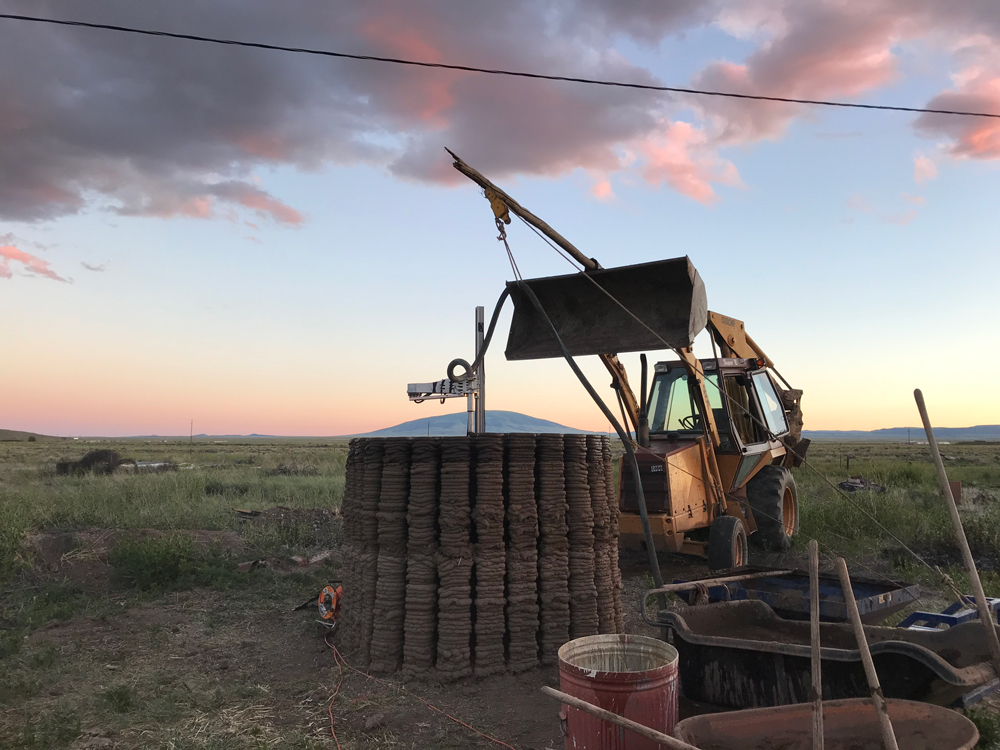
Printing was accomplished using the extremely portable SCARA HD, developed by 3dpotter and Emerging Objects, which makes it possible to print large objects and environments using local soils. Ceramic vessels were printed using the Potterbot driven by ceramic 3D printing software Potterware.
Project Date: 2019
Project Location: San Luis Valley, Colorado — The origins of the Rio Grande Watershed
Project Team: Ronald Rael, Virginia San Fratello, Mattias Rael, Sandy Curth, Logman Arja, and Danny Defelici. Special thanks to Johnny Ortiz and Afton Love for being our guides in the Pueblo traditions of harvesting and firing wild clays, Christine Rael, Zane Defelici and Dennis Vandergriff (3D Potter), Ehren Tool and Stephanie Syjuco (Ceramics Department at UC Berkeley), Floor van de Velde, Christina de Leon and Chris Gauthier (Cooper Hewitt), Tomás Lobato (Lobato Construction), Jennifer Wolch and Gail Stanley (UC Berkeley College of Environmental Design), and the generous support of Darrin Wood, Darrell Chan, and Ivan Chen.
